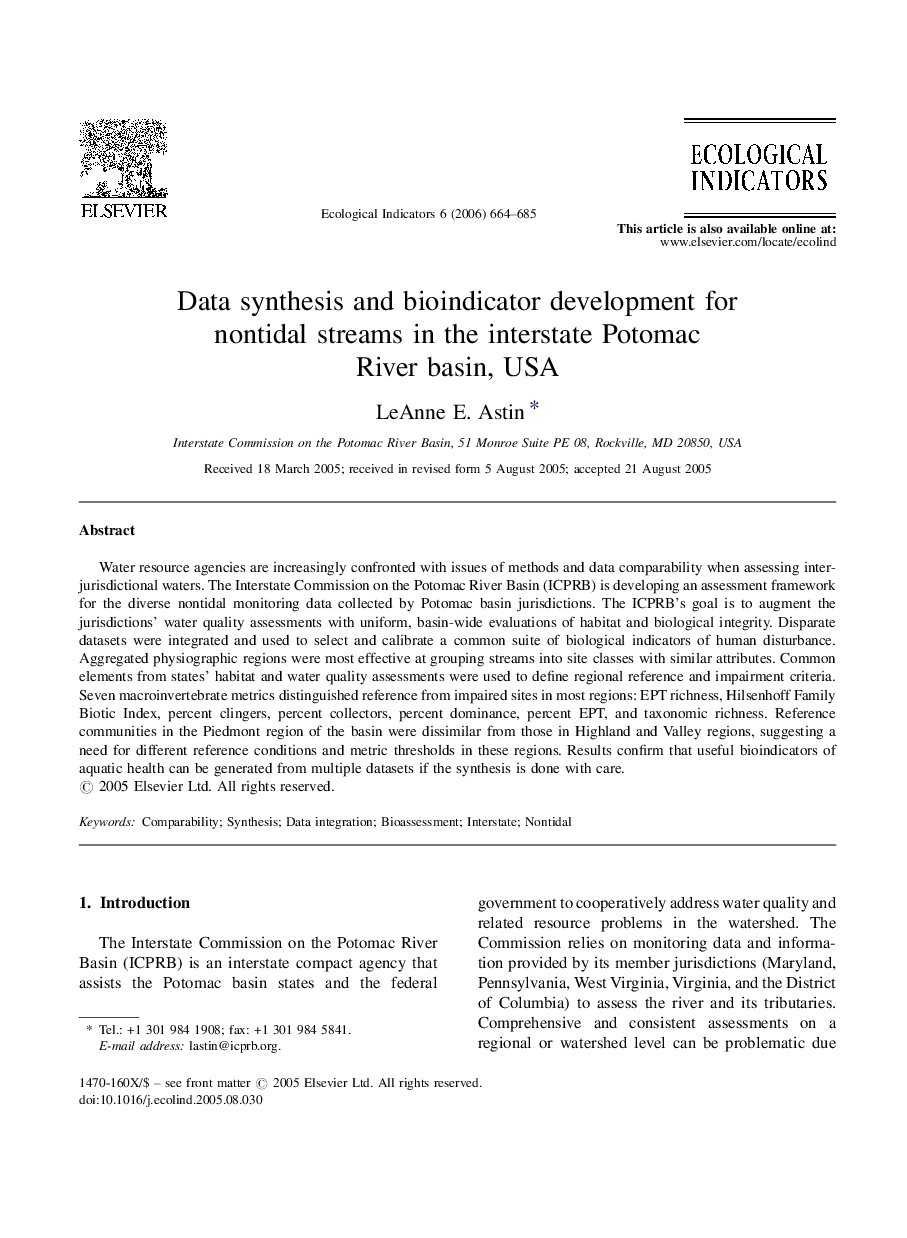| Article ID | Journal | Published Year | Pages | File Type |
|---|---|---|---|---|
| 4374712 | Ecological Indicators | 2006 | 22 Pages |
Abstract
Water resource agencies are increasingly confronted with issues of methods and data comparability when assessing inter-jurisdictional waters. The Interstate Commission on the Potomac River Basin (ICPRB) is developing an assessment framework for the diverse nontidal monitoring data collected by Potomac basin jurisdictions. The ICPRB's goal is to augment the jurisdictions' water quality assessments with uniform, basin-wide evaluations of habitat and biological integrity. Disparate datasets were integrated and used to select and calibrate a common suite of biological indicators of human disturbance. Aggregated physiographic regions were most effective at grouping streams into site classes with similar attributes. Common elements from states' habitat and water quality assessments were used to define regional reference and impairment criteria. Seven macroinvertebrate metrics distinguished reference from impaired sites in most regions: EPT richness, Hilsenhoff Family Biotic Index, percent clingers, percent collectors, percent dominance, percent EPT, and taxonomic richness. Reference communities in the Piedmont region of the basin were dissimilar from those in Highland and Valley regions, suggesting a need for different reference conditions and metric thresholds in these regions. Results confirm that useful bioindicators of aquatic health can be generated from multiple datasets if the synthesis is done with care.
Related Topics
Life Sciences
Agricultural and Biological Sciences
Ecology, Evolution, Behavior and Systematics
Authors
LeAnne E. Astin,
